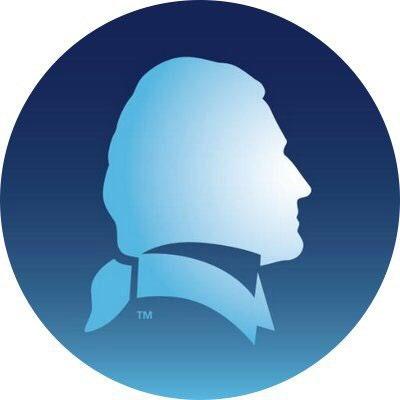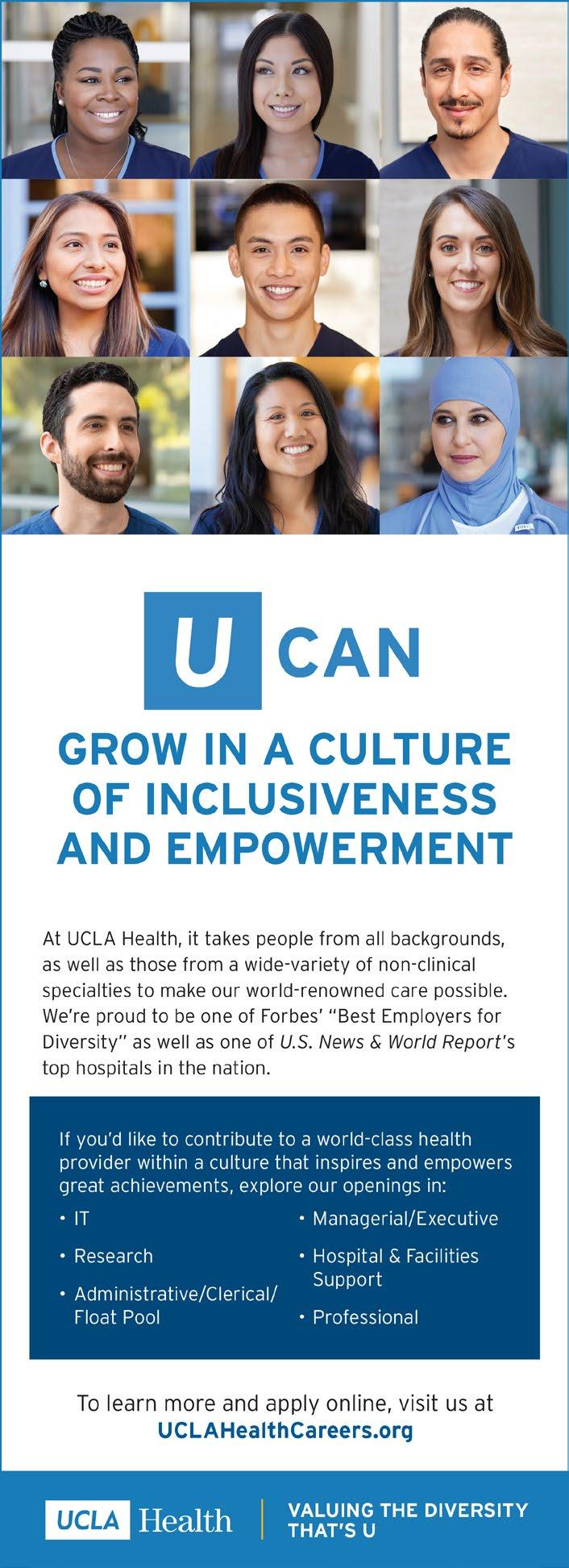
7 minute read
Five Things for Employers to Consider When Hiring Individuals with Disabilitie s
from EOEJournal JULY 2023
by EOE JOURNAL
by Jenna Shrove, Senior Director of Strategic Advocacy and Advisor to the Chief Policy Officer

Advertisement


Amid the ongoing workforce shortage, businesses are finding it more challenging than ever to hire talented workers. One source of talent employers should consider is people with disabilities. By recruiting, hiring, and retaining these individuals, businesses can give themselves a competitive edge and demonstrate their commitment to inclusion. The key is to focus on what a person can do rather than their limitations. People with disabilities comprise the largest minority group across the globe. As of 2018 , only 29% of Americans of working age with disabilities participated in the workforce, meaning there is a potential untapped talent pool. Not only that, studies show that companies leading in hiring persons with disabilities were, on average , twice as likely to have higher total shareholder returns than those of their peer group. Other research shows that GDP could increase by $25 billion if just 1% more persons with disabilities joined the U.S. labor force. And employees with disabilities are often more loyal meaning less turnover.
Career Opportunities
Looking for a new career? Whether you’re new to the job market, looking to advance your career or are a seasoned professional, Seneca Foods Corporation offers an array of rewarding Career Opportunities across a variety of functions, from Operations Management, Agriculture, Information Technology, Sales and Marketing, Human Resources, Finance and more.
Successfully integrating these individuals brings many advantages. Here are six things employers should consider when hiring those with disabilities.
1. Know the laws
First and foremost, it’s important to note the role of the Americans with Disabilities Act (ADA) and the Equal Employment Opportunity Commission (EEOC) when considering hiring persons with disabilities.
The ADA prohibits discrimination against people with disabilities in several areas, including employment, transportation, public accommodations, communications, and access to state and local government programs and services. Title I of the ADA covers employment and protects the rights of both employees and job seekers.
The ADA also defines what constitutes a disability. A disability is a physical or mental impairment substantially limiting one or more major life activities. Individuals with disabilities often need workplace accommodations—a modification or adjustment to a job, the work environment, or how things are usually done during the hiring process.
The EEOC is responsible for enforcing federal laws that make it illegal to discriminate against a job applicant or an employee. Most employers with at least 15 employees are covered by EEOC laws including the ADA. The laws apply to all types of work situations, including hiring, firing, promotions, harassment, training, wages, and benefits.
2. Consider working with partner organizations to recruit talent
To help identify pools of potential talent, best practices include working with recruiters and national or local organizations.
The Employer Assistance and Resource Network on Disability Inclusion (EARN) is a free, nationwide service that educates employers about effective strategies for recruiting, hiring, retaining and advancing people with disabilities.
The Workforce Recruitment Program for College Students with Disabilities (WRP) is a free resource that connects private businesses and federal agencies nationwide with qualified job candidates for temporary or permanent positions in various fields.
Find local or national non-profits or charitable organizations like Easterseals that support the development and advancement of people who are living with different types of disabilities, including expanding access to employment opportunities.
Partnerships with colleges and universities’ recruiting offices are critical if you are searching for candidates with college degrees and specialized education and training.
Many community rehabilitation providers (CRPs) can also help with your hiring needs. Some serve targeted local areas, while others have state or national programs. Best Buddies International, for example, offers services in 17 states. These types of organizations can connect your company to local programs, help tailor recruitment efforts, and enhance education and knowledge on disability hiring practices.

3. Review job descriptions carefully
Employers should review job descriptions carefully to make sure they don’t include unnecessary restrictions that would prevent someone with a disability from applying or being hired. For instance, with the widespread availability of video technology, having the ability to travel into the office may not be the requirement it once was.
Continued on page 16
People come from all over the to study here, to practice here, and to be treated from all over the world practice here, and to be treated here. and Thomas Jefferson University Hospitals in the delivery of patient care, educating tomorrow and discovering new knowledge. distinguished medical institutions in the country, outstanding people and accomplishments. cultural competence are critical components of the uniqueness of each of our employees visit www.jeffersonhr.org
People come from all over the world to study here, to practice here, and to be treated here.



Thomas Jefferson University and Thomas Jefferson University are committed to excellence in the delivery of patient care, the health professionals of tomorrow and discovering new As one of the most distinguished medical institutions our history is filled with outstanding people and accomplishments. Diversity, inclusion and cultural competence are critical our mission and we celebrate the uniqueness of each of every day.
In keeping with Jefferson’s Mission, We Improve Lives, it is our goal to recruit, retain, develop and reward highlyqualified employees. If you are enthusiastic, caring and dedicated to service excellence, we invite you to consider joining Jefferson. Jefferson encourages its employees to expand their knowledge and develop their careers through growth opportunities and continuing education.
To learn more about Jefferson visit www.jeffersonhr.org
To learn more about Jefferson, visit
To apply online visit:
Thomas Jefferson University and Thomas Jefferson University Hospitals are committed to excellence in the delivery of patient care, educating the health professionals of tomorrow and discovering new knowledge. As one of the most distinguished medical institutions in the country, our history is filled with outstanding people and accomplishments. Diversity, inclusion and cultural competence are critical components of our mission and we celebrate the uniqueness of each of our employees every day.


To apply online visit Recruit.jefferson.edu
Recruit.jefferson.edu
To learn more about Jefferson visit www.jeffersonhr.org
To apply online visit Recruit.jefferson.edu
THOMAS JEFFERSON UNIVERSITY & JEFFERSON HEALTH




When interviewing candidates with disabilities, employers must follow certain guidelines . For example, there are specific questions you may not ask job applicants regarding their disabilities or medical conditions, and specific points in the hiring process when you may ask certain questions. Crucially, the ADA does not require an employer to hire an applicant with a disability. The applicant must be able to satisfy the requisite skill, experience, education and other job-related requirements of the position, with or without reasonable accommodation, and perform the essential functions of such a position.
4. Consider what workplace accommodations may be needed
Persons with disabilities often require accommodation or support mechanisms beyond that of other employees.
One of the key non-discrimination aspects of Title I is the requirement to provide reasonable accommodations for employees and job seekers with disabilities. Accommodations make it possible for a person with a disability to perform their job, but an employer does not have to implement an accommodation that would create an “undue hardship” for the employer, such as costing too much or requiring too much difficulty to implement.
Examples of reasonable accommodations could include:
• Providing forms and written materials in accessible formats during the hiring process

• Flexible work schedule or remote work opportunities
• Specialized equipment or software
A
Business owners may be concerned about the costs of accommodating persons with disabilities. However, studies show that often these are actually minimal and fruitful investments. According to employers participating in a recent study, nearly 60% of accommodations cost absolutely nothing to make, while the rest typically cost only $500 per employee with a disability.
Government incentives and programs are available to help fund accommodations for those with disabilities. For convenience, we put together a guide to help you understand these opportunities.
Guide to Tax Credits For Hiring Employees With Disabilities
Businesses that make structural adaptations or other workplace accommodations for employees with disabilities may be eligible for certain tax incentives.
Read the Guide
5. Support an inclusive culture
There may also be some adjustments you need to make to create an inclusive workspace for employees with disabilities. The most successful integration models treat them as undifferentiated from other employees, establish support systems, support language best practices, and prioritize access for all.
Invest in universal designs for the workplace . Universal design , or inclusive design, is a process by which architects and designers create spaces and select features that are accessible, intuitive to use or access, have minimal room for error, and accommodate varying ages, body sizes, ranges of mobility, and other characteristics. Examples include heightadjustable desks, door handles that do not require a grip, and closed-captioned videos.

See our career opportunities at www.hnicareers.com and listed with state workforce training and development centers.
As Affirmative Action/Equal Opportunity Employers, the office furniture companies of HNI Corporation support equal opportunities for and advancement of all people based on their qualifications and experience without regard to race, color, religion, sex, sexual orientation, gender identity, age, national origin, marital status, veteran status, citizenship status, disability, genetic information or any other status protected by law.
Practice inclusive language . Inclusive language is a critical component of respecting your workforce’s diversity and fostering an inclusive environment. A good rule of thumb is to ask about language preferences and stick to those. The United Nations and the National Center on Disability and Journalism offer helpful language guidelines, and Disability:In offers a resourceful guide on Disability Etiquette
Establish support systems. Encouraging employees to form support systems, like Employee Resource Groups (ERGs), can facilitate the sharing of useful information about specific diversities inside the group and throughout the broader organization. The Harvard Business Review provides examples of ways companies are already expanding their talent pools to include the neurodiverse and building equitable workplaces.


Once you’ve started hiring employees with disabilities, it is important to provide training, mentoring, and resources to help with inclusivity and retention.
Article provided by The U.S. Chamber of Commerce. For more information, visit www.uschamber.com
Our compassionate care nurtures lasting connections redeemerhealth.org/careers

Redeemer Health provides compassionate care across every stage of life.






